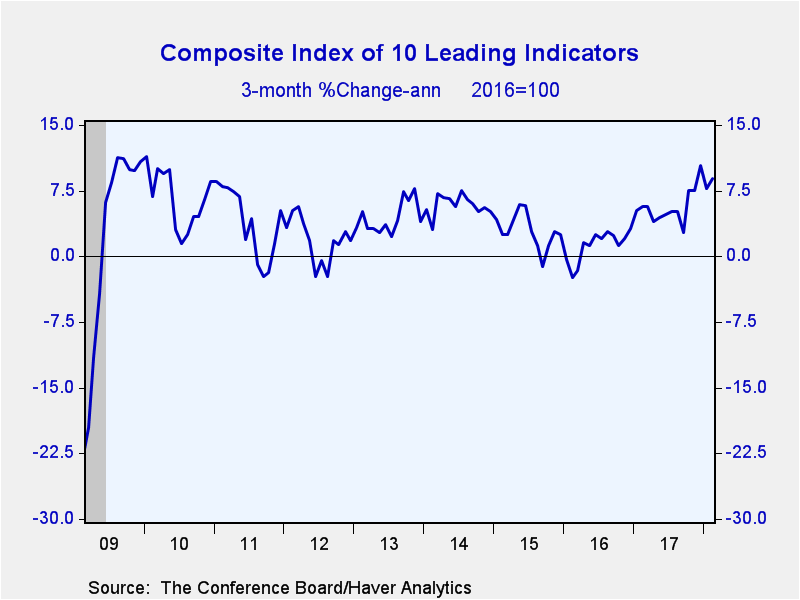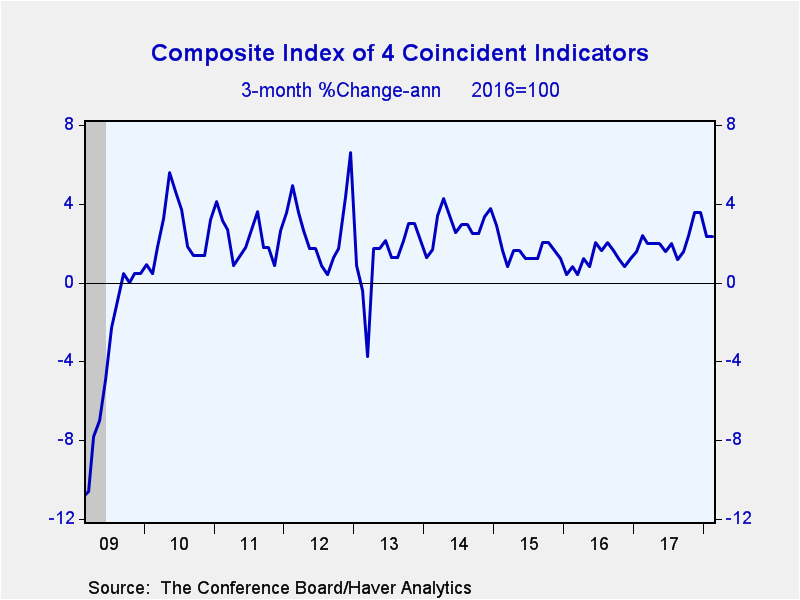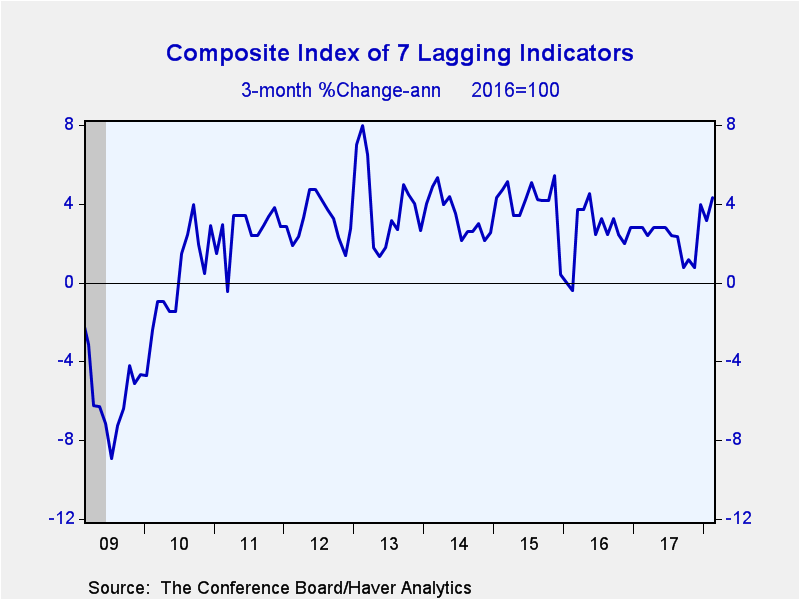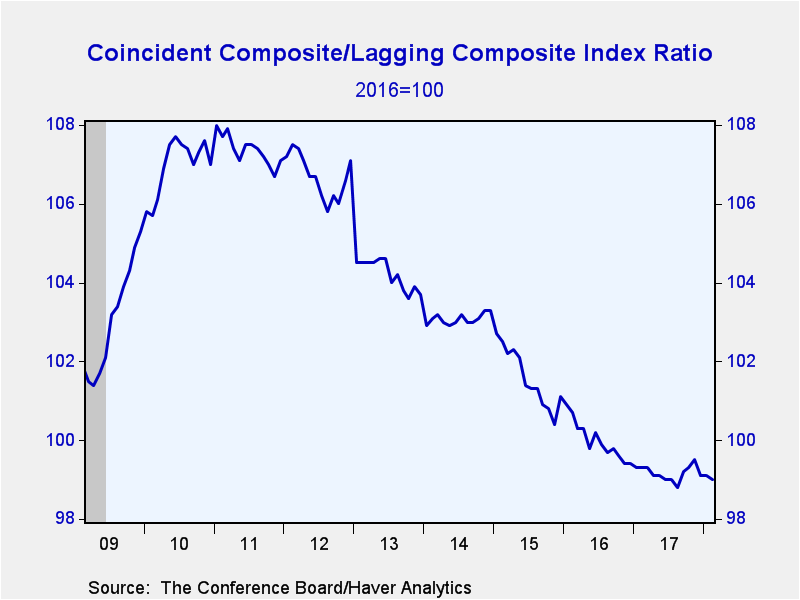 Global| Mar 22 2018
Global| Mar 22 2018U.S. Leading Economic Indicators Continue to Rise
by:Tom Moeller
|in:Economy in Brief
Summary
The Conference Board's Composite Index of Leading Economic Indicators increased 0.6% during February following a 0.8% January gain, revised from 1.0%. The y/y change rose to 6.5%, its strongest since July 2014. A 0.5% rise had been [...]
The Conference Board's Composite Index of Leading Economic Indicators increased 0.6% during February following a 0.8% January gain, revised from 1.0%. The y/y change rose to 6.5%, its strongest since July 2014. A 0.5% rise had been expected in the Action Economics Forecast Survey.
Gains in the component series were widespread, including a longer average workweek, fewer initial claims for jobless insurance, a higher ISM new orders index, a steeper interest rate spread between 10-Year Treasuries & Fed funds and improved consumer expectations for business/economic conditions. More orders for consumer as well as capital goods had minimal positive contributions. Contributing negatively to the index change were fewer building permits and lower stock prices. Three-month growth in the leading index improved slightly to 8.9% (AR).
The Index of Coincident Economic Indicators increased 0.3% (2.3% y/y) following a unrevised 0.1% rise. Each of the component series contributed positively to the total's rise including personal income less transfer payments, business sales, payroll employment and industrial production. Three-month growth in the index held steady at a firm 2.4% (AR).
The Index of Lagging Economic Indicators gained 0.4% (2.5% y/y) during February after an unrevised 0.1% uptick. A lessened average duration of unemployment, the consumer credit/personal income ratio, more C&I loans outstanding and the business inventory-to-sales ratio had positive effects on the index. The 6-month % change in the services CPI contributed negatively. Three-month growth in the lagging index increased to 4.3%, up from 0.8% as of November.
The ratio of coincident-to-lagging indicators is often considered to be a leading indicator of economic activity. As economic slack diminishes relative to current performance, the ratio will rise. It declined last month to 99.0 and matched the 1975 low.
The Conference Board figures are available in Haver's BCI database; the components are available there, and most are also in USECON. The expectations are in the AS1REPNA database. Visit the Conference Board's site for coverage of leading indicator series from around the world.
| Business Cycle Indicators (%) | Feb | Jan | Dec | Feb Y/Y | 2017 | 2016 | 2015 |
|---|---|---|---|---|---|---|---|
| Leading | 0.6 | 0.8 | 0.7 | 6.5 | 4.1 | 1.2 | 4.2 |
| Coincident | 0.3 | 0.1 | 0.2 | 2.3 | 1.8 | 1.3 | 2.2 |
| Lagging | 0.4 | 0.1 | 0.6 | 2.5 | 2.6 | 2.9 | 3.7 |
Tom Moeller
AuthorMore in Author Profile »Prior to joining Haver Analytics in 2000, Mr. Moeller worked as the Economist at Chancellor Capital Management from 1985 to 1999. There, he developed comprehensive economic forecasts and interpreted economic data for equity and fixed income portfolio managers. Also at Chancellor, Mr. Moeller worked as an equity analyst and was responsible for researching and rating companies in the economically sensitive automobile and housing industries for investment in Chancellor’s equity portfolio. Prior to joining Chancellor, Mr. Moeller was an Economist at Citibank from 1979 to 1984. He also analyzed pricing behavior in the metals industry for the Council on Wage and Price Stability in Washington, D.C. In 1999, Mr. Moeller received the award for most accurate forecast from the Forecasters' Club of New York. From 1990 to 1992 he was President of the New York Association for Business Economists. Mr. Moeller earned an M.B.A. in Finance from Fordham University, where he graduated in 1987. He holds a Bachelor of Arts in Economics from George Washington University.










